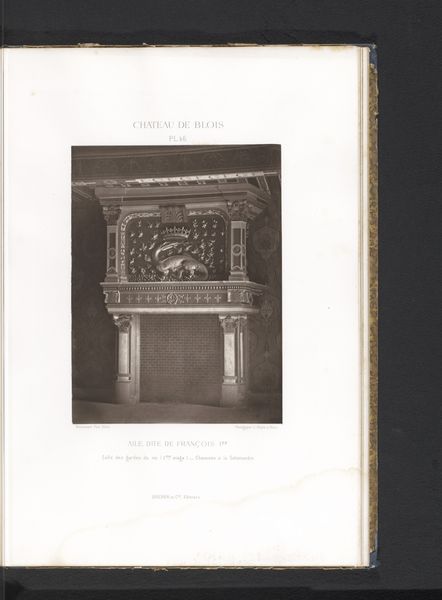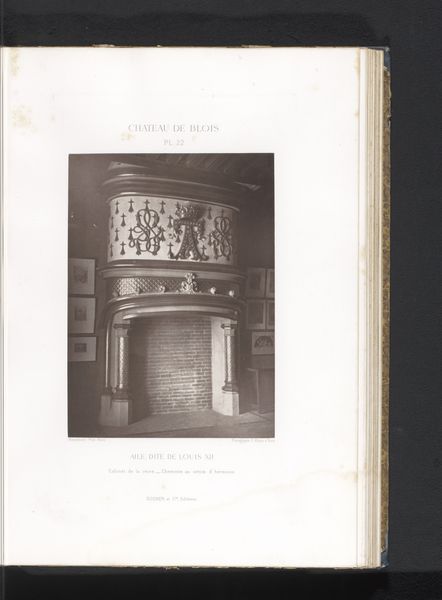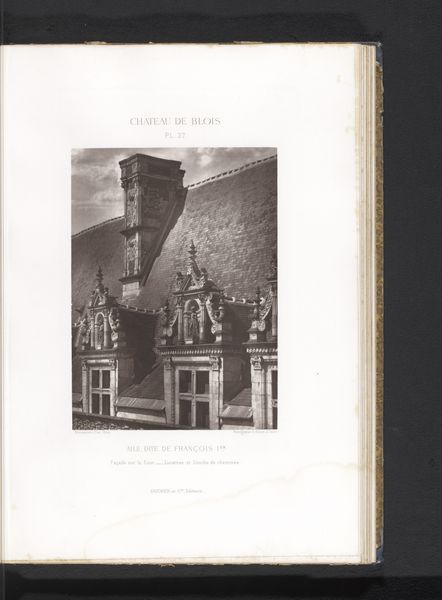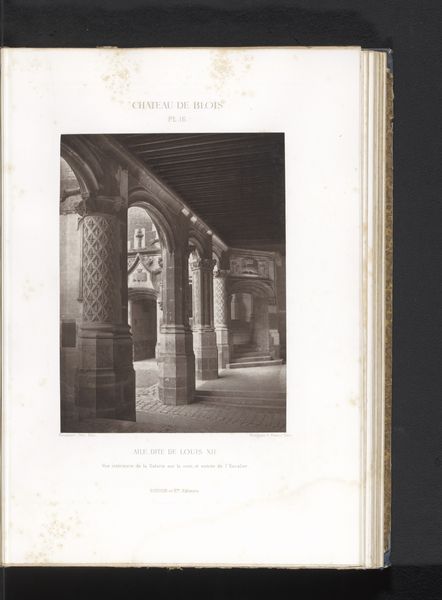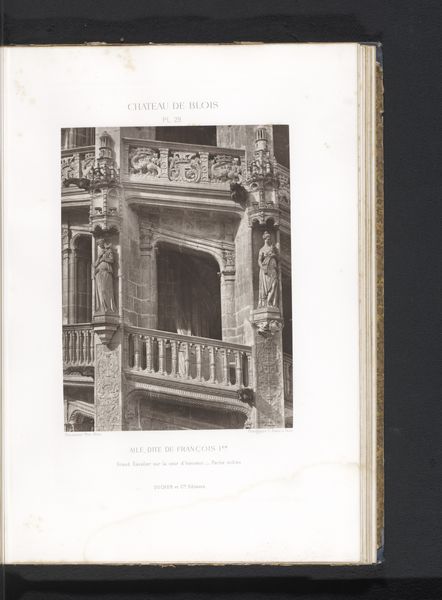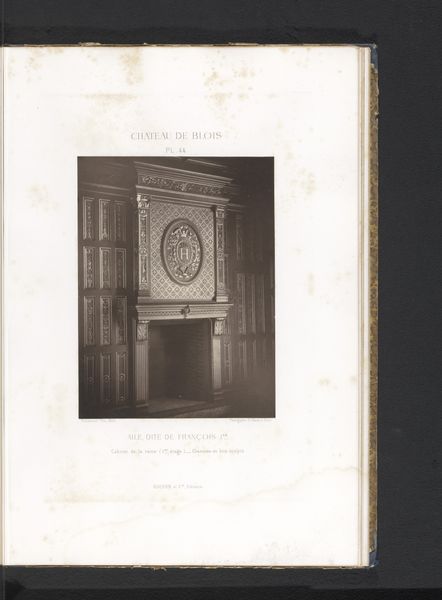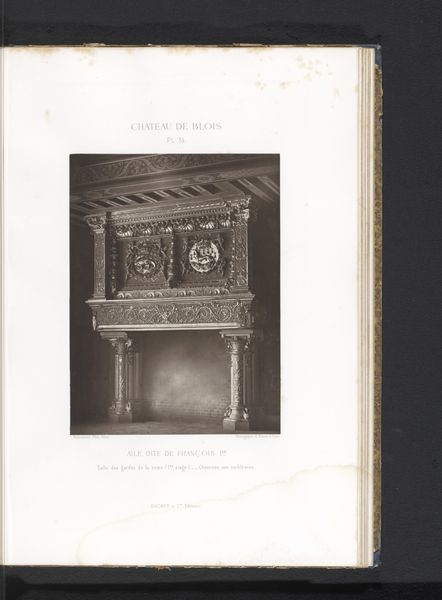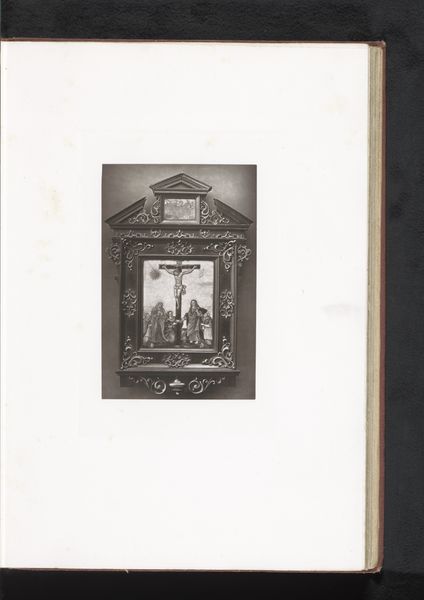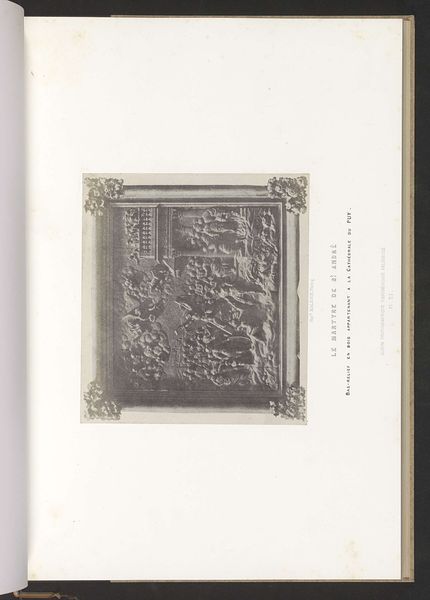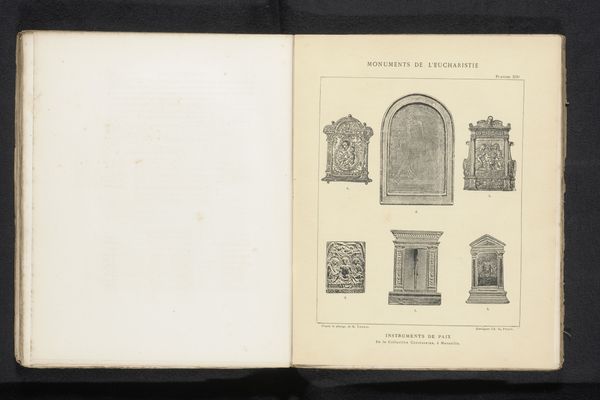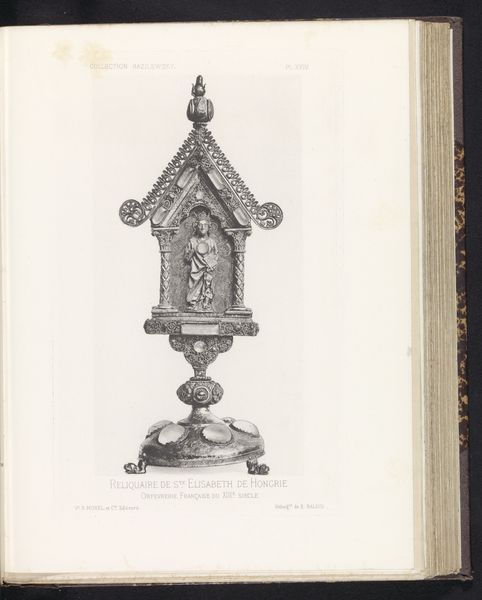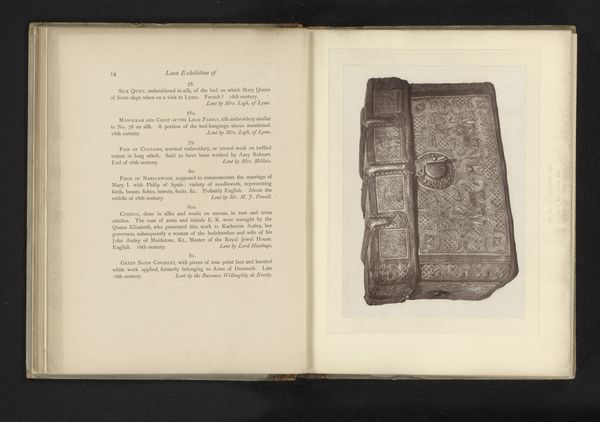
Gezicht op een schoorsteenmantel in de Lodewijk XII vleugel van het Kasteel van Blois before 1875
0:00
0:00
print, photography, site-specific
# print
#
photography
#
ancient-mediterranean
#
site-specific
Dimensions: height 242 mm, width 171 mm
Copyright: Rijks Museum: Open Domain
Curator: This image, taken before 1875 by Médéric Mieusement, captures a view of a chimney mantel in the Louis XII wing of the Chateau de Blois. It’s a fascinating photograph, and we're fortunate to have it here at the Rijksmuseum. Editor: It exudes a quiet power, doesn’t it? Stark, almost monolithic. The grey tones emphasize the elaborate carving; there is an undeniable austerity despite the decoration. Curator: The choice to photograph this chimney piece is rather strategic. The Chateau de Blois itself represents shifting political powers through the eras; housing a chimney, of course, makes it quite personal, representing a domestic moment within an emblem of power. Editor: And that domestic sphere echoes with symbolism. The hearth, historically a locus of community, warmth, family… here it is grand, imposing. Curator: It speaks to how even seemingly domestic spaces become stages for projecting authority. This image underscores how power operates not only on grand scales, but also within the intimate, everyday experiences of those inhabiting such spaces. Editor: Look at the details – the sculpted frieze, the roundels. Each detail has a conscious significance, reflecting power dynamics that permeate daily life. Those small emblems aren't mere decoration; they're signifiers. What can we determine of the meaning of each symbolic visual choice, its original importance, and continued influence over the history of such visual representations of fireplaces? Curator: Mieusement's decision to focus on this particular detail prompts us to consider the ideological weight embedded within the architectural elements and interior design, how choices about space and ornamentation reflect the social, cultural, and political landscape of the time. The choice of where, and what to build, is always making a deliberate choice, a purposeful reflection of the zeitgeist. Editor: Indeed. The visual weight feels anchored in cultural memory. Considering it was documented by Mieusement before 1875, we also contemplate his political intent: preserving history during a period of change, reflecting the anxieties of a specific moment in France. Curator: Thinking about who had access to these images, and for what purposes is particularly important. The distribution and reception of the image speaks volumes. Editor: It’s so powerful to peel back those layers. Curator: Absolutely. And perhaps we can appreciate how the quiet power in the symbols shown reminds us how the architecture we live with can speak volumes about social realities.
Comments
No comments
Be the first to comment and join the conversation on the ultimate creative platform.
